If you plan to set up a pet breeding establishment, you will have the duty of care to screen for health conditions in your animals. X-rays, as well as other medical and genetic tests, play a role here. You might want to perform an X-ray or ultrasound to know how many animals to expect in each litter.
Other articles you would like: Will a Dog Breed While Bleeding and Is Animal Breeding Safe?
Animal Breeders Need To X-Ray
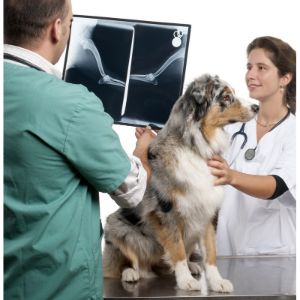
Why do animal breeders need to X-ray their animals? One reason is to conduct pre-whelping puppy counts. This X-ray tells you how many puppies to expect in a litter. Additionally, X-rays are an important part of health screening for breeding stock and puppies. Health screening detects genetic conditions.
What Are Pre-Whelping Puppy Counts?

Health screening is not the only reason for X-rays. Many pet breeders conduct pre-whelping puppy counts. This X-ray tells you how many puppies will be born in a litter. You can perform this X-ray on pregnant female dogs.
While some vets use ultrasound for this purpose, others recommend X-rays, which tend to have a higher accuracy rate for the number of puppies. X-rays are also more affordable for the breeder.
Most vets say you should perform a pre-whelping X-ray approximately one week before the whelp is expected to happen. By this point, all puppies should be visible on the X-ray because their bones are sufficiently mineralized.
Why Should You Know The Puppy Count In Advance?
It is knowing the number of puppies in a litter before whelping means that you can properly plan. You will have a better idea of whether and when you should request veterinary help for your dog during the birth process.
Breeders like to know the number of puppies in a litter in advance so they can find prospective purchasers early in the process. Some prospective dog owners like to put their names down on waiting lists and pay deposits before the dog they want is born.
Should Your Animal Have An Ultrasound Instead Of An X-Ray?
Some animal breeders are concerned that an X-ray might hurt the expected litter and the mother dog or cat. Concern about X-ray safety comes from the radiation involved. While many vets feel that X-rays are safe for whelp counts, you can get an ultrasound if you prefer.
What Testing Should You Perform Before Breeding Animals?

Breeders perform tests to ensure the animal has no any genetic diseases it can pass on to its offspring. X-rays are a fundamental part of this testing. The American Kennel Club and other organizations and associations have strict rules about screening for health conditions in dog breeding. There are not as many rules for cat breeders, and guidance is limited.
Hip And Joint X-Rays
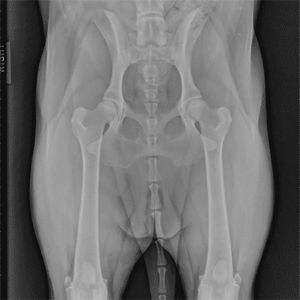
Hip dysplasia is a common genetic condition in dogs. As a reputable breeder, you must screen for this to ensure none of your breeding stock carries the genes that lead to this painful and debilitating condition.
X-rays are vital to screen for genetic conditions affecting the hips and joints. You should receive certification from the OFA (Orthopedic Foundation for Animals) for your animals to show that they do not have this condition.
You must submit your animal’s pelvic X-rays to the OFA to receive the certification. You can take these X-rays of breeding dogs when they are at least two years old.
What Is Hip Dysplasia?
Developmental problems in the hip joint cause canine hip dysplasia. The hip joint’s components do not fit correctly in dogs with this disorder. This condition is painful and will cause deterioration of the joint. Dogs with this condition usually lose the use of their hip joints at some point. Hip dysplasia tends to be most common in larger dogs.
A dog’s genetic heritage is the most significant factor in whether or not it develops hip dysplasia. Certain factors can make a dog with the genetic tendency for hip dysplasia more likely to develop a severe case of this condition. These factors include being overweight or obese, taking part in inappropriate exercise, and having problems with growth rate.
What Is Elbow Dysplasia?
Abnormal development of the elbow joint causes canine elbow dysplasia. In a dog with elbow dysplasia, the three fundamental bones of the elbow joint do not fit together as they should. This condition is painful and causes degeneration of the joint and bones.
Like hip dysplasia, genetics is the main factor in elbow dysplasia. Other factors such as diet and severe injury can play a part.
What Is An X-Ray?
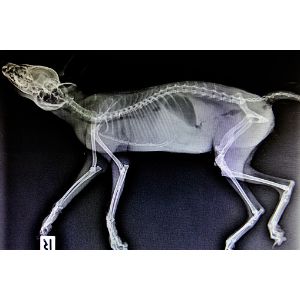
An X-ray is an imaging tool that lets health professionals create images of the inside of a person or animal’s body. X-rays are also known as radiographs. Veterinarians use X-rays to see images of an animal’s bones and other internal structures.
Veterinary practices frequently use X-rays to investigate symptoms and make diagnoses. X-rays are important components for screening animals for health problems.
How Are Animal X-Rays Performed?
In most cases, veterinarians can X-ray animals without using a tranquilizer or anesthetic. In other words, the animal stays awake. The veterinarian might administer sedation if an animal is highly agitated.
Your vet will position the animal correctly for whatever kind of X-ray he performs. In most cases, he will place the animal on its back or side. X-ray machines for animals are smaller than the ones designed for humans.
Are X-Rays Safe For Animals?
Some breeders worry that X-rays will harm animals because they involve radiation. But, as long as X-rays are performed only when necessary and in moderation, these procedures should not harm animals.
What Are MRIs And CT Scans For Animals?
MRIs and CT scans are other kinds of imaging technology. Veterinarians sometimes use them to see inside an animal’s body for diagnostic purposes.
MRI stands for Magnetic Resonance Imaging. Veterinarians tend to use this technology for detecting problems like internal bleeding. A CT scan, on the other hand, is a specific X-ray category.
Other Health Tests To Perform Before Breeding Animals
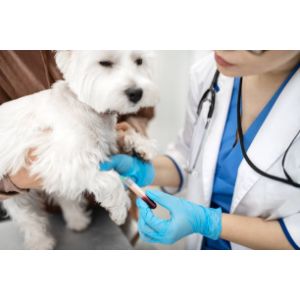
You need to perform other kinds of tests as an animal breeder as well as X-rays.
Eye Tests
Pet breeders should perform eye tests on their breeding animals and litters. You should have your animals tested and certified for eye health. The American College of Veterinary Ophthalmologists provides useful information and guidance on these procedures. Their members can help you find a vet qualified to do these tests.
DNA Testing
DNA testing is an essential part of screening for genetic health conditions before breeding animals. Prospective pet owners will not consider you a reputable breeder if you do not perform DNA testing as part of your health screening.
You need to find a well-established genetic testing company to test your animal’s DNA. Ensure that the company will conduct a full screening for genetic conditions. You should receive a full genetic attributes profile.
Your part in this process is easy. You need to collect a sample from your animal, usually from the inside of its cheek. When doing this, you gather the epithelial cells that the testing company needs to test and screen DNA.
Another option is to take a blood sample. If you get the DNA testing done by a veterinarian, they might ask to conduct a blood test.
Genetic Health Screening Varies By Breed
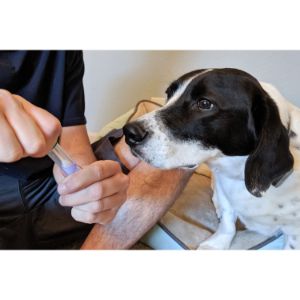
Different dog and cat breeds call for specific kinds of health screening. This is especially true for canines. Genetic health conditions that are most common in each breed vary significantly. Some conditions, such as hip dysplasia, are more widespread and are a common part of the health screenings that reputable breeders perform.
The Orthopedic Foundation For Animals (OFA) provides a database where you can look up the health screening tests recommended for each breed. Breeders should give the breeding stock (dog parents) and puppies these tests to screen for genetic conditions.
Let’s take a look at a few of the most common dog breeds and the health screening that the OFA recommends for them.
Golden Retriever
The OFA recommends that golden retrievers should be screened for hip dysplasia, elbow dysplasia, and cardiac problems. They should also receive an ACVO eye exam. For hip dysplasia, the OFA says golden retrievers should have an OFA and PennHIP evaluation.
The OFA evaluation is used to screen for elbow dysplasia. To evaluate cardiac health, each dog should receive a basic cardiac exam at a minimum.
German Shepherd
Evaluations for hip and elbow dysplasia are required for the health screening of German shepherds. The ACVO eye exam should also be performed, as well as a test for degenerative myelopathy.
German shepherds should receive a cardiac evaluation (at a minimum, a basic cardiac exam) and screen for autoimmune thyroiditis. Unlike other breeds, German shepherds must receive a GSDCA temperament test.
Chihuahua
While it does not require as many tests as the larger dogs we talked about above, chihuahuas do need to undergo health screening. This breed requires the OFA evaluation for patellar luxation, as well as the ACVO eye exam and cardiac evaluation (the basic cardiac exam at minimum).
Your Responsibilities As a Breeder
X-rays are just one of the health tests you must perform as a breeder. Remember that you are responsible for the present and future health and well-being of your animals. Do not take becoming a breeder lightly. You are making a big commitment. Responsibly operating a breeding facility is time and labor-intensive, not to mention expensive. The initial investment is sizable.
The American Kennel Club (AKC) explains that your goal should be to “breed to improve.” You should offer health guarantees on your puppies to their purchasers. Do not rush into breeding. Conduct thorough research and ensure you have enough space and areas for your dogs and puppies to be comfortable and explore.
Breeding stock should be in good health at the time you breed them. Bring the female dog to a veterinarian for examination to ensure that she is mature and healthy enough to breed.
Final Thoughts On Why Animal Breeders Need To X-Ray

As we have learned here, there are two main reasons breeders need to X-ray their animals. These are:
- Health screening
- Conducting pre-whelping puppy counts
Ensure that you stay up-to-date with all X-rays and other tests your animals need.
You will also like:
For more information about Animal X-rays, check out the video below:

